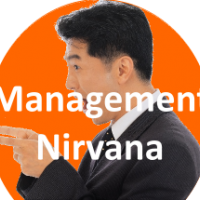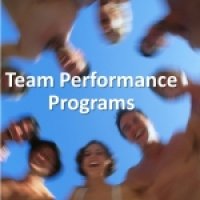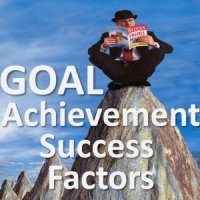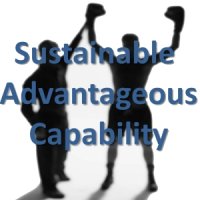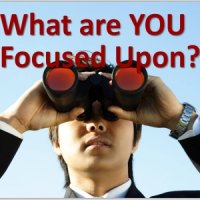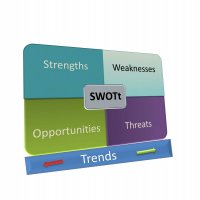An Overview of the Components of an Effective Management or Employee Development Program
Research has repeatedly indicated that most conventional training approaches do not produce long lasting benefits when it comes to the critical areas of management, leadership, people and interpersonal skills and personal effectiveness(organizing, planning, project management, problem solving). Participants typically enjoy it and often rate it highly because of both what is commonly termed, “entertainment value: and the “ah-hah” factor but weeks later, there is rarely much impact demonstrated when you look at behaviors. This has been backed up by a number of corporate and academic studies. Why?.jpg)
Results depend on changing habits, behavior, attitudes and how people deal with themselves (natural tendencies, motivations, interests, emotional intelligence…). Conventional approaches typically do not deal with them and typically what happens is that a small percentage, the 10 to 20% that is heavily motivated by self-improvement gets some results because they do their own follow-through, the rest receive no benefit.
To get lasting results, our programs focus on implementing and utilizing the following critical success factors:
- An accurate self knowledge (natural tendencies, motivations, interests, relationship/learning styles, etc..) such that the focus becomes how to deploy new knowledge to self)
- Accomplished at the onset with a detailed self-assessment- using the Harrison Assessment program and utilizing this information individually throughout.
- TIMING: One time events don't work when you are trying to change habits, behaviors and attitudes, they must be ongoing, incorporate practice and reinforcement…
- Recommended monthly 4 hour event
- Required in-between…
- Practice, incorporate into your procedures and patterns of behavior
- Reminders/discussion: Accomplished through phone and internet
- Buy-in: To increase results, each participant's buy-in & understanding of the process up-front.
- During the debrief of the results of the Harrison Assessment, this is accomplished.
- Make buy-in a key focus of initial program orientation and initial module…
- Must keep the "buy-in" throughout - change is not easy for all, but doable for all who buy-in to the benefits
- Reward/Recognition system/Celebrate successes
- Focus on the Gap between where one is at and where they should or want to be
- Focus on Benefits and on challenges in coming out of “comfort zone” (which will differ by individual but preliminary assessment will provide critical information for…)
- Accurate assessment of journey and where you are now
- Work with leader to keep focus on follow-through (practice and share and coach) and momentum
- Human Nature: Deal with the inevitable INCORRECT ASSUMPTIONS and mental models
- Elimination of the “I know it or I’ve heard it before, therefore I do it.”
- Spaced repetition is required to change habits: 21 to 31 times is specific requirements
- Achieved through memory aids, practice/role plays…
- Diversity of perspective & experience brought to bear
- “Share & Coach” approach
- Participants encouraged and provided tools to coach others at work and depending on topic
- Keep activities measured (small doses) and Interactive
- Action-oriented, Practical and relevant
- Small dose modules can be integrated in and paced to maximize performance improvements
- Measured development with follow-up: Start off each session with review of past follow-through activities
- Accountability: Built-in accountability for implementation
- Use mentoring
- Follow-up built in with individual blog sites, text messaging(if feasible), tele-conferences, email and monthly live meetings (depending upon “culture” of organization)
- Use of periodic of informal test/quizzes, surveys
- Maintain a “Scoreboard” mainly focused on activities accomplished
- Support: Must be an organizational process with strong leadership support
- Critical Mass to create an informal feedback loop- all key managers involved.
- An environment encouraging open/constructive feedback/No fear
- Successes celebrated
- Relevance:
- To change a habit/behavior pattern, must have a new one in place and ready to "practice"
- A focus on the right skills- the skills for getting things done through and with people
- Interest and Engagement and Credibility
- Facilitator credibility and skill
- Emotionally engaging
- Stimulating thought-provoking interactions
- Return on Investment
- Ensured by integrating the management of all the above, proven with results.
- Keep focus on key business performance measurements so return is obvious at completion.







 "The U.S. Department of Labor has estimated the costs to replace an employee to be approximately 1/3 their annual salary; but when you start looking at the impact of hiring the wrong employee and having to replace them, some studies say 2.5 times annual earnings, some 4 times and some even higher." AGILEdge
"The U.S. Department of Labor has estimated the costs to replace an employee to be approximately 1/3 their annual salary; but when you start looking at the impact of hiring the wrong employee and having to replace them, some studies say 2.5 times annual earnings, some 4 times and some even higher." AGILEdge

